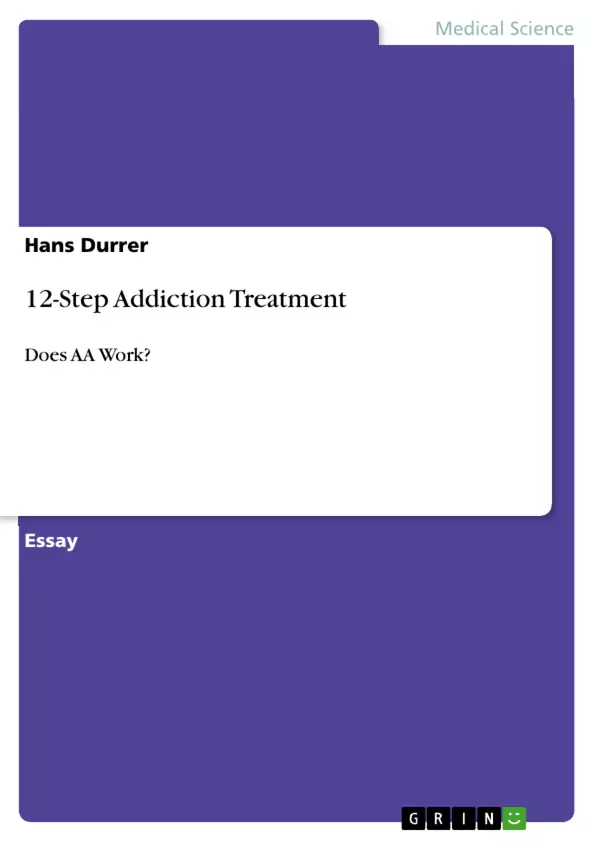A comprehensive literature review was undertaken that was compared to the author's own AA-experience in various cultures. The search was neither restricted to a specific time period nor were language restrictions employed. Studies published in peer-reviewed, academic journals as well as books and websites were selected on the basis of "usefulness" in regards to the research question. After establishing what AA is, the essay examined whether AA works. It found that AA differs substantially in regards to other treatment approaches by it's "acting into thinking"-philosophy. The efficacy of AA could not be proven by employing a cause-and-effect methodology. Moreover, the complexity of human behaviour as well as the fact that AA is not practised uniformly raises many seemingly unanswerable methodological problems and it remains questionable whether AA treatment and outcomes can be measured by a cause-and-effect method. Testimonies of personal experience as well as for centuries practised human wisdom seem however to suggest that AA does work – for the ones who work the programme, that is.
Inhaltsverzeichnis (Table of Contents)
- ABSTRACT
- METHODOLOGY
- FINDINGS
- WHAT IS AA?
- DOES AA WORK?
- DISCUSSION
- CONCLUSION
- REFERENCES
- APPENDIX
Zielsetzung und Themenschwerpunkte (Objectives and Key Themes)
This paper explores the efficacy of Alcoholics Anonymous (AA) as an addiction treatment method. It aims to determine whether AA truly "works" by examining both the literature on AA and the author's personal experiences with the program in diverse cultural contexts. The paper also delves into the nature of AA as a program and how it differs from other treatment approaches.
- Effectiveness of AA as a treatment method
- The nature and principles of the AA program
- The role of spirituality in AA
- Comparison of AA to other addiction treatment approaches
- The impact of cultural influences on AA practice
Zusammenfassung der Kapitel (Chapter Summaries)
The paper begins with a thorough overview of the methodology employed, highlighting the comprehensive literature review and the author's own experiences as contributing factors. It then dives into an in-depth examination of what constitutes the AA program, exploring its core tenets, the Twelve Steps, and the Twelve Traditions. This chapter sheds light on the spiritual aspects of AA and its reliance on a higher power for recovery. Additionally, it addresses the debate surrounding AA's religious elements and its classification as a quasi-religion, emphasizing its distinction from a cult. The paper concludes by discussing the challenges associated with measuring the effectiveness of AA due to its non-uniform application and the complex nature of human behavior.
Schlüsselwörter (Keywords)
Alcoholics Anonymous, addiction treatment, 12-step program, spirituality, recovery, effectiveness, methodology, cultural influences, quasi-religion, cult, personal experience, literature review.
- Quote paper
- Hans Durrer (Author), 2010, 12-Step Addiction Treatment, Munich, GRIN Verlag, https://www.grin.com/document/176302



